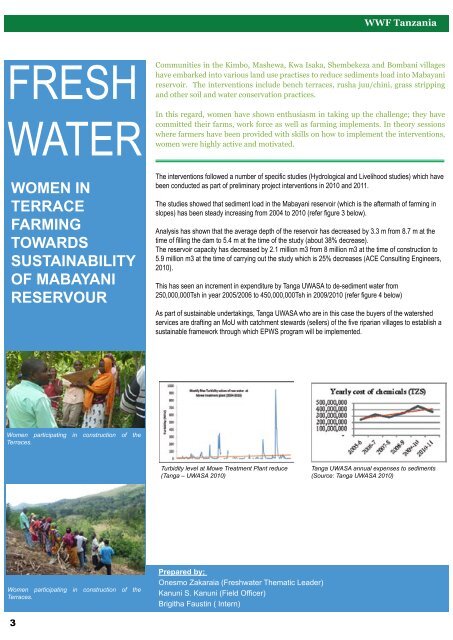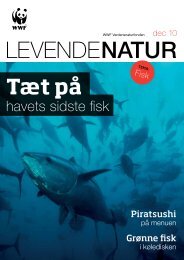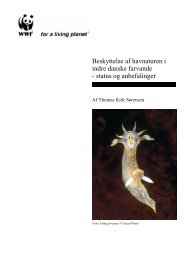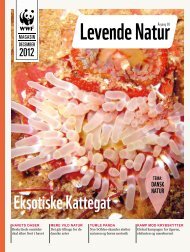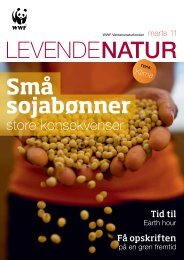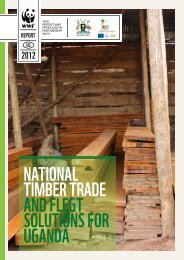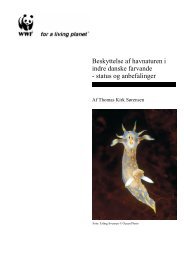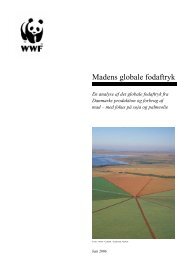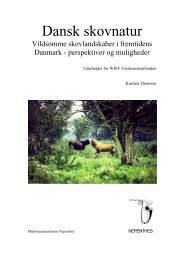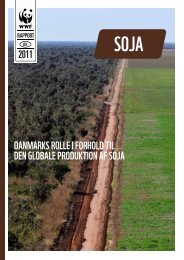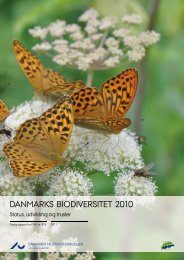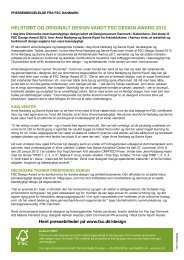About WWF-Tanzania
About WWF-Tanzania
About WWF-Tanzania
Create successful ePaper yourself
Turn your PDF publications into a flip-book with our unique Google optimized e-Paper software.
<strong>WWF</strong> <strong>Tanzania</strong><br />
FRESH<br />
WATER<br />
WOMEN IN<br />
TERRACE<br />
FARMING<br />
TOWARDS<br />
SUSTAINABILITY<br />
OF MABAYANI<br />
RESERVOUR<br />
Women participating in construction of the<br />
Terraces.<br />
Women participating in construction of the<br />
Terraces.<br />
3<br />
Communities in the Kimbo, Mashewa, Kwa Isaka, Shembekeza and Bombani villages<br />
have embarked into various land use practises to reduce sediments load into Mabayani<br />
reservoir. The interventions include bench terraces, rusha juu/chini, grass stripping<br />
and other soil and water conservation practices.<br />
In this regard, women have shown enthusiasm in taking up the challenge; they have<br />
committed their farms, work force as well as farming implements. In theory sessions<br />
where farmers have been provided with skills on how to implement the interventions,<br />
women were highly active and motivated.<br />
The interventions followed a number of specific studies (Hydrological and Livelihood studies) which have<br />
been conducted as part of preliminary project interventions in 2010 and 2011.<br />
The studies showed that sediment load in the Mabayani reservoir (which is the aftermath of farming in<br />
slopes) has been steady increasing from 2004 to 2010 (refer figure 3 below).<br />
Analysis has shown that the average depth of the reservoir has decreased by 3.3 m from 8.7 m at the<br />
time of filling the dam to 5.4 m at the time of the study (about 38% decrease).<br />
The reservoir capacity has decreased by 2.1 million m3 from 8 million m3 at the time of construction to<br />
5.9 million m3 at the time of carrying out the study which is 25% decreases (ACE Consulting Engineers,<br />
2010).<br />
This has seen an increment in expenditure by Tanga UWASA to de-sediment water from<br />
250,000,000Tsh in year 2005/2006 to 450,000,000Tsh in 2009/2010 (refer figure 4 below)<br />
As part of sustainable undertakings, Tanga UWASA who are in this case the buyers of the watershed<br />
services are drafting an MoU with catchment stewards (sellers) of the five riparian villages to establish a<br />
sustainable framework through which EPWS program will be implemented.<br />
Turbidity level at Mowe Treatment Plant reduce<br />
(Tanga – UWASA 2010)<br />
Prepared by;<br />
Onesmo Zakaraia (Freshwater Thematic Leader)<br />
Kanuni S. Kanuni (Field Officer)<br />
Brigitha Faustin ( Intern)<br />
<strong>WWF</strong> <strong>Tanzania</strong><br />
Tanga UWASA annual expenses to sediments<br />
(Source: Tanga UWASA 2010)


